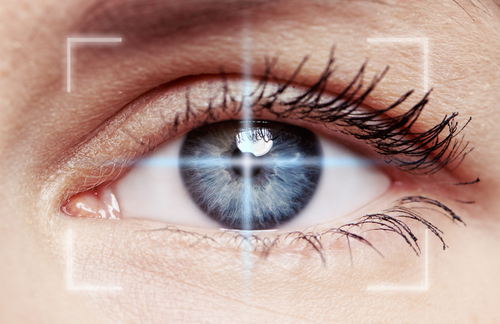GS010 Gene Therapy Continues to Improve Vision Clarity in LHON Patients, New Phase 3 Data Show

GS010, a gene therapy designed to improve vision clarity in people with Leber hereditary optic neuropathy (LHON), continues to show benefits in the second scheduled readout — at week 72 — of the Phase 3 RESCUE clinical trial, according to GenSight Biologics.
The RESCUE trial (NCT02652767), underway at clinical sites in the U.S. and across Europe, is evaluating the efficacy and safety of a single intravitreal (eye) injection of GS010 in patients diagnosed with LHON due to mutations in the ND4 gene, who reported vision loss within six months of the study’s start.
A total 39 participants received a GS010 injection in one eye and a sham injection (no substance) in the other, with the therapy randomly administered in the least and most affected eyes.
The study’s primary goal was to compare improvements in visual acuity between the GS010 and sham treatments at 48 weeks after injection, with secondary evaluations done at 72 and 96 weeks. Improvements were tested with the standard Early Treatment Diabetic Retinopathy Study (ETDRS) visual acuity scale, which measures vision clarity based on letters of decreasing size on a chart.
Top-line results at 48 weeks showed that GS010 improved vision compared with sham-treated eyes.
At 72 weeks, the vision of those treated with GS010 continued to improve compared with 48 weeks. The results showed a sustained recovery from the worst vision point post-treatment, as shown by the best-corrected visual acuity (BCVA) and contrast sensitivity (CS), two measures of visual function.
GS010-treated eyes recovered 21 ETDRS letters at 72 weeks from the worst vision point; the improvement at 48 weeks was 13 ETDRS letters.
However, the improvements seen at 72 weeks were not enough to rescue visual acuity completely, with 10 fewer ETDRS letters than at the start of the trial.
The data showed that, at 72 weeks, visual acuity also improved in the sham-treated eyes from the worst vision point post-treatment at a similar rate as the GS010 group, by 21.7 ETDRS letters. As a result, researchers saw no statistically significant difference between GS010- and sham-treated eyes, as previously seen in the ongoing Phase 3 REVERSE trial (NCT02652780) for GS010. The REVERSE trial is evaluating the safety and efficacy of GS010 in patients up to one year from onset of vision loss due to LHON.
By the 72nd week of the RESCUE trial, 40% of GS010- and sham-treated eyes showed a clinically significant difference of 15 ETDRS letters recovered from the worst vision point post-treatment.
Similar results were seen with the CS test, a second measure of visual function, with both GS010- and sham-treated eyes at 72 weeks showing improvements compared with 48 weeks. No statistically significant differences were seen between GS010- and sham-treated eyes.
“This improvement in visual function from Week 48 to Week 72, both in visual acuity and contrast sensitivity, strengthens our belief in the benefits of GS010, looking at the shift of the mean BCVA from off-chart to on-chart at Week 72,” Catherine Vignal, MD, principal investigator at the clinical site in Paris, said in a press release.
“These results show a more favorable trend than the outcome we usually observe in clinical practice for LHON ND4 patients,” said Vignal, also head of the department of neuro-ophthalmology at the Rothschild Foundation.
The thickness of retinal tissues, including the retinal nerve fiber layer and macula, however, continued to decline by 72 weeks, as shown by the results of optical coherence tomography (OCT), a noninvasive imaging test that uses light to take pictures of the retina. The rate of thinning slowed between 48 and 72 weeks.
“By design, the population in Rescue is very heterogeneous, and the structure of their retina is also highly variable, from marked atrophy [shrinkage] of nerve fibers to edema,” said Robert C. Sergott, MD, chief of neuro-ophthalmology at the Wills Eye Hospital at Thomas Jefferson University in Philadelphia.
Safety data showed that GS010 was well-tolerated throughout the 72 weeks, with no serious adverse events or treatment interruptions directly linked to the therapy. The most common adverse events included temporary high intraocular pressure and inflammation, most likely caused by the intraocular injection itself rather than GS010. These adverse effects were resolved by conventional treatment.
“We are excited and extremely gratified to see a picture of a sustained recovery of visual function emerge from RESCUE results at Week 72,” said Bernard Gilly, GenSight’s co-founder and CEO.
“The findings continue to be consistent with what was observed in REVERSE at 48 and 72 weeks as well as with RESCUE at 48 weeks, and bolster our confidence in the benefits that GS010 can deliver to patients and motivate us to work with the authorities to bring GS010 as early as possible to the market,” Gilly added.
New data from the third and last readout, at 96 weeks, are expected by the end of this year.






